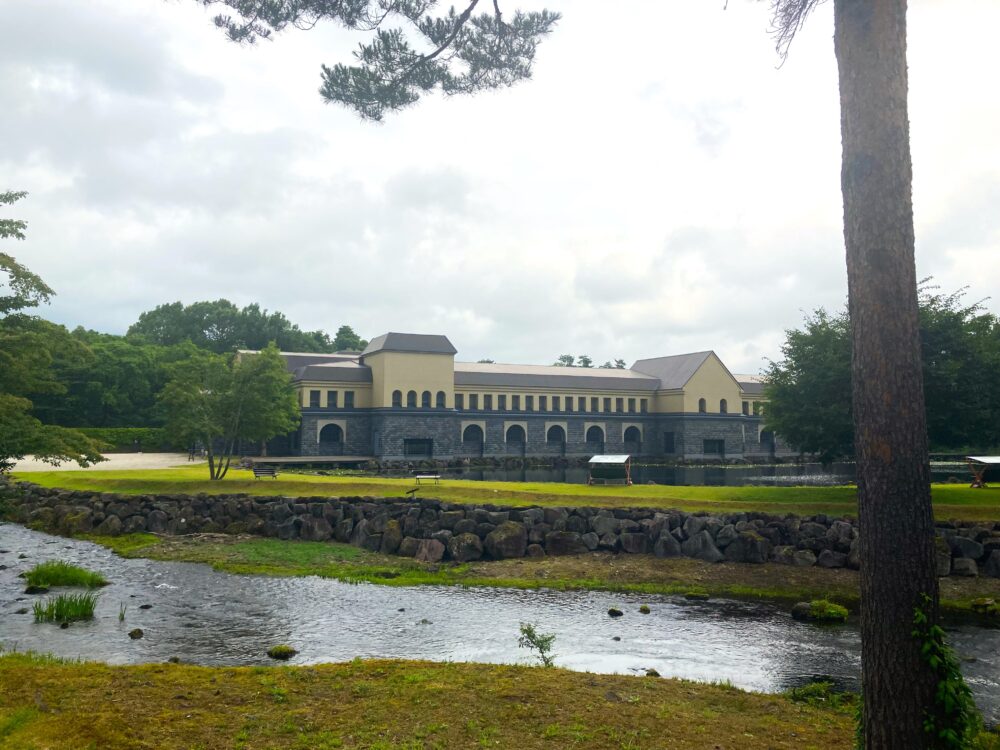
A Hidden Museum Filled with Dalí’s Masterpieces
Surrounded by the rich natural beauty of Bandai-Asahi National Park in Kitashiobara Village, Fukushima Prefecture, there’s a little-known gem that every art lover should know about — the Morohashi Museum of Modern Art.
Opened in 1999, this museum is best known for its impressive collection of works by Salvador Dalí, the master of surrealism.
It houses around 330 pieces by Dalí — one of the largest collections in the world!
While copyright restrictions prevent the museum from displaying all of Dalí’s works online, fans of his dreamlike art will find this place truly inspiring.
It’s a rare opportunity to step right into the surreal world where fantasy meets reality.
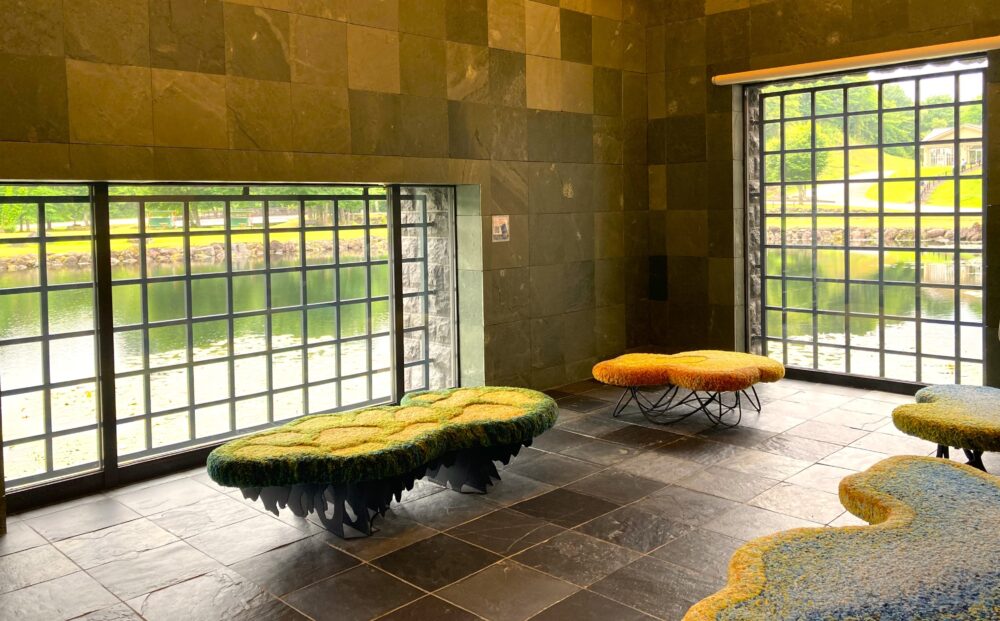
More Than Just Dalí: A World-Class Collection
The Morohashi Museum isn’t only about Dalí.
You’ll also find works by great masters of modern Western art such as Pissarro, Sisley, Van Gogh, Bonnard, and Pascin.
In this article, we’ll take a closer look at a few standout pieces from the museum’s collection.
If any of them catch your eye, make sure to see them in person — and experience the quiet harmony between art and nature that makes this museum so special.
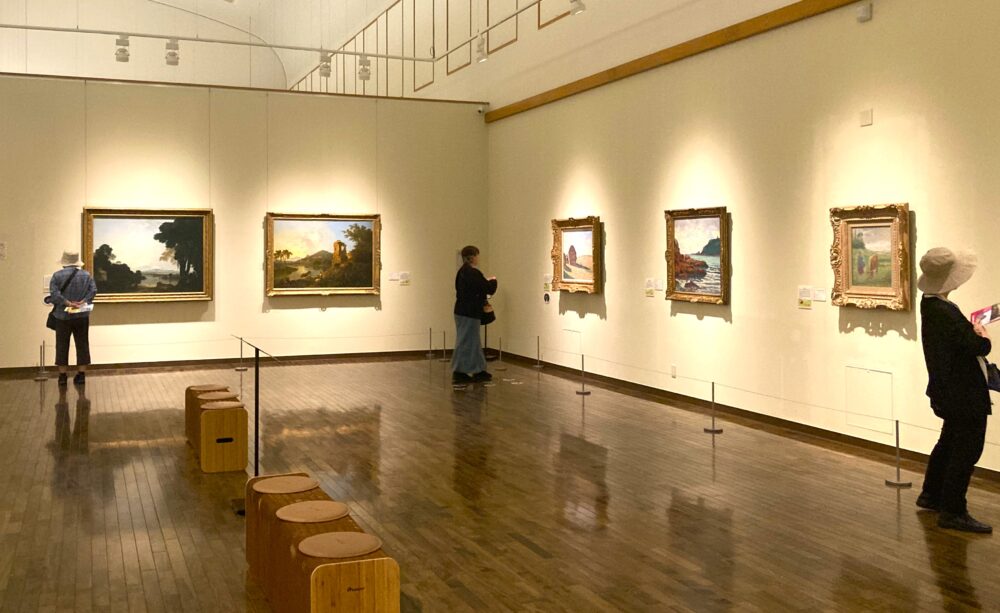
Collection Highlights
Alfred Sisley
“Haystacks” (1895)
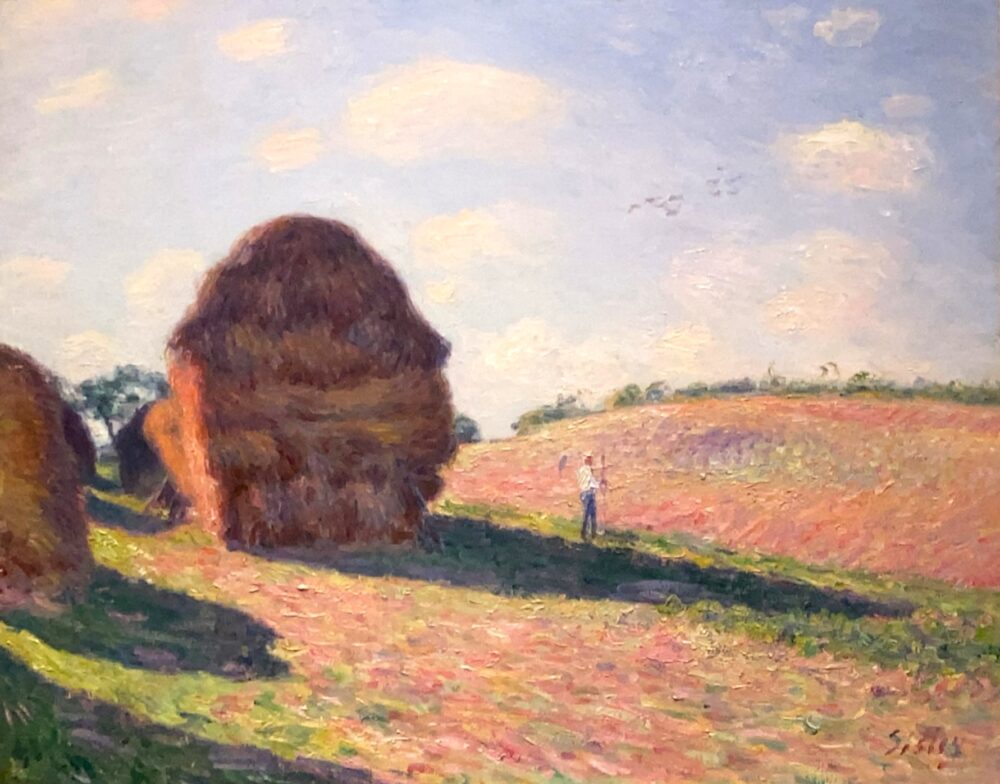
About This Work (Tap or Click to View)
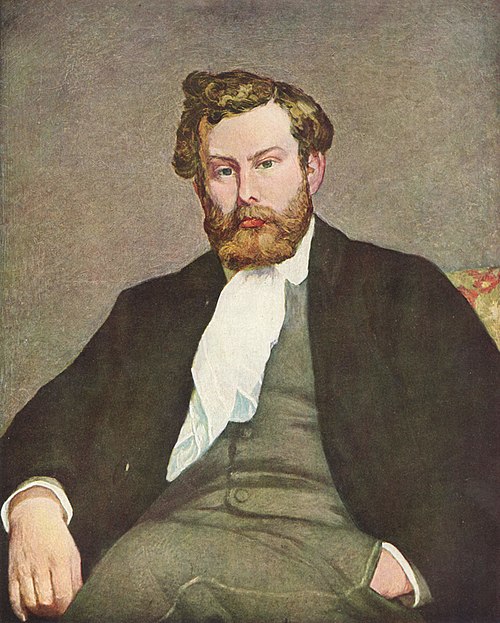
“Mr. Impressionist” Alfred Sisley
When we think of Impressionism, names like Monet, Renoir, and Pissarro usually come to mind.
But among them, Alfred Sisley stands out as the artist who stayed true to the Impressionist style throughout his life.
While Renoir moved toward classical expression and Pissarro explored Neo-Impressionism,
Sisley stayed faithful to the Impressionist spirit throughout his life —
perhaps the purest of them all.
Sisley’s “Haystacks”
When you hear “Haystacks,” you might first think of Monet’s famous series.
But the motif was actually loved by many Impressionist painters.
This version by Sisley was created in Moret-sur-Loing, the village where he spent his later years.
Under a clear blue sky, the pinkish tones of the hay and the warm color of the earth gently blend together.
The contrast of light and shadow gives the scene a natural rhythm,
making it one of those paintings you can gaze at endlessly without getting tired.
Pay special attention to the color of the shadows —
they’re not black, but painted in a soft, luminous blue.
This effect comes from the Impressionist technique known as divided brushstrokes,
where colors are applied side by side rather than blended,
creating the shimmering sense of light and air that defines Impressionist painting.
It’s the perfect example of a classic Impressionist landscape —
quiet yet full of light and movement.
If you visit the Morohashi Museum, make sure to spend a few moments with “Haystacks.”
It’s a piece that truly captures the spirit of Impressionism.
Armand Guillaumin
“Agay Bay” (1910)
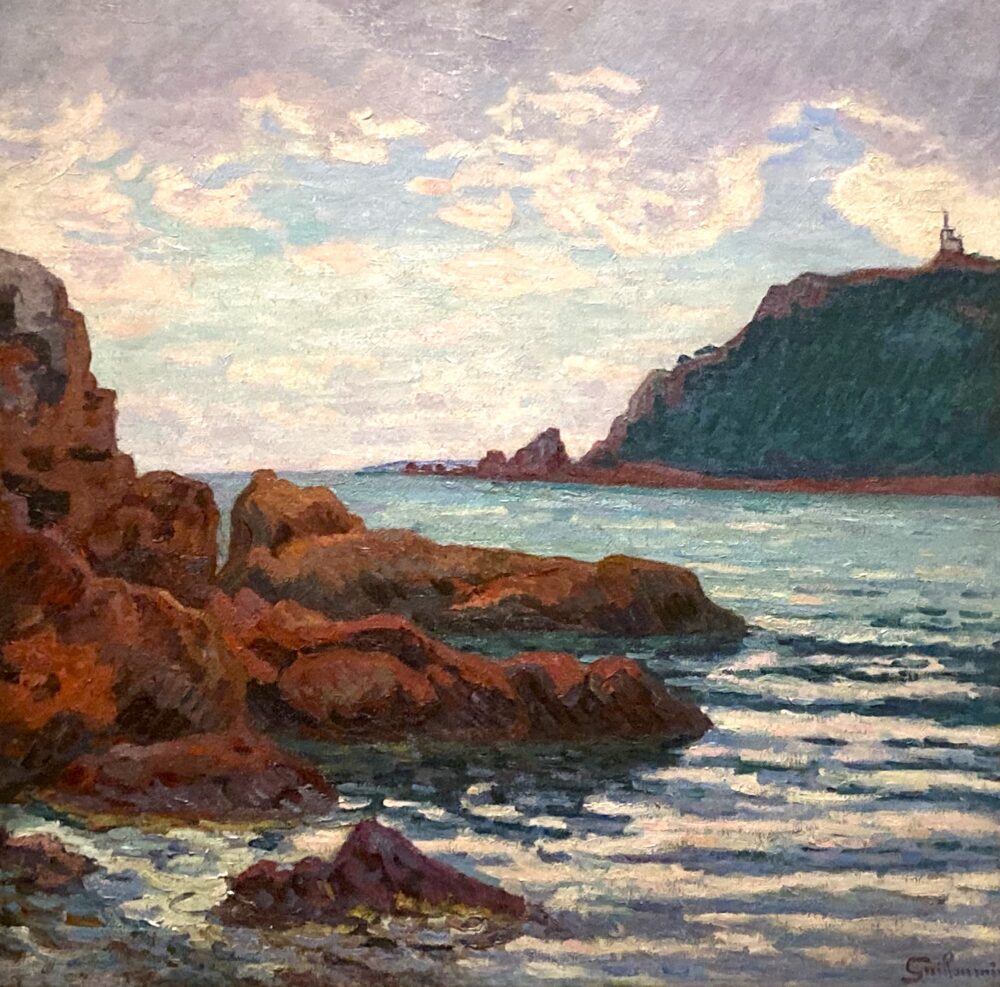
About This Work (Tap or Click to View)
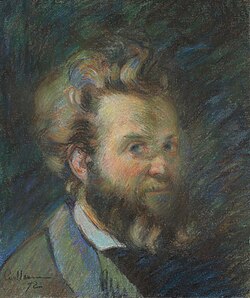
The “Hidden Impressionist”
When we think of Impressionism, names like Monet and Renoir usually come to mind—painters known for their soft, gentle colors.
But among them was an artist who used color in a far bolder way: Armand Guillaumin.
Though not as famous as his peers, Guillaumin had a remarkable sense of color—so much so that some later critics called him a forerunner of Fauvism.
His style changed dramatically after a stroke of luck: in 1891, he won the lottery.
Freed from financial pressure and the need to please patrons, Guillaumin began to travel widely, painting landscapes across France as he searched for his own unique palette.
“Agay Bay” — Where Color Comes Alive
The scene in this work is Agay, a small harbor town in the Estérel region of southern France — one of Guillaumin’s favorite places.
Here, the red cliffs unique to the area meet the deep blue of the Mediterranean Sea, creating a vivid contrast.
Guillaumin captured this powerful harmony of nature with bold brushstrokes and radiant colors.
You can almost feel the Mediterranean breeze blowing across the canvas.
The energy of his brushwork and the intensity of his colors make the painting come alive with sunlight and motion.
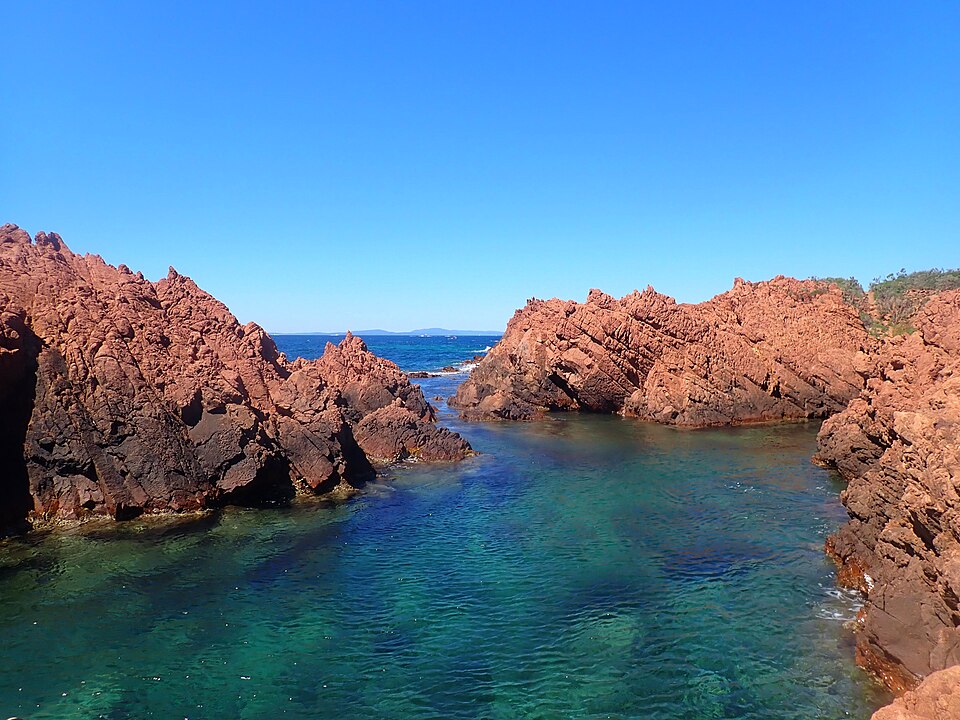
img: by FredD
A Unique Voice Among the Impressionists
Even within the Impressionist circle, Guillaumin’s approach was strikingly different.
While Sisley focused on capturing light, Guillaumin explored the expressive power of pure color.
Both painted nature, yet their works reflect entirely different emotions — like two mirrors showing distinct sides of the same world.
This painting reveals just how diverse Impressionism can be.
If you visit the Morohashi Museum of Modern Art, take a moment to experience the color energy of Guillaumin’s Agay Bay up close — it’s pure sunshine on canvas.
Pierre Bonnard
“The landscape of Bathers in a Wood” (1899)
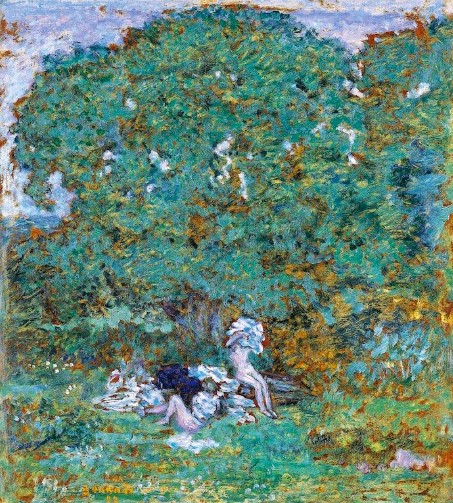
About This Work (Tap or Click to View)
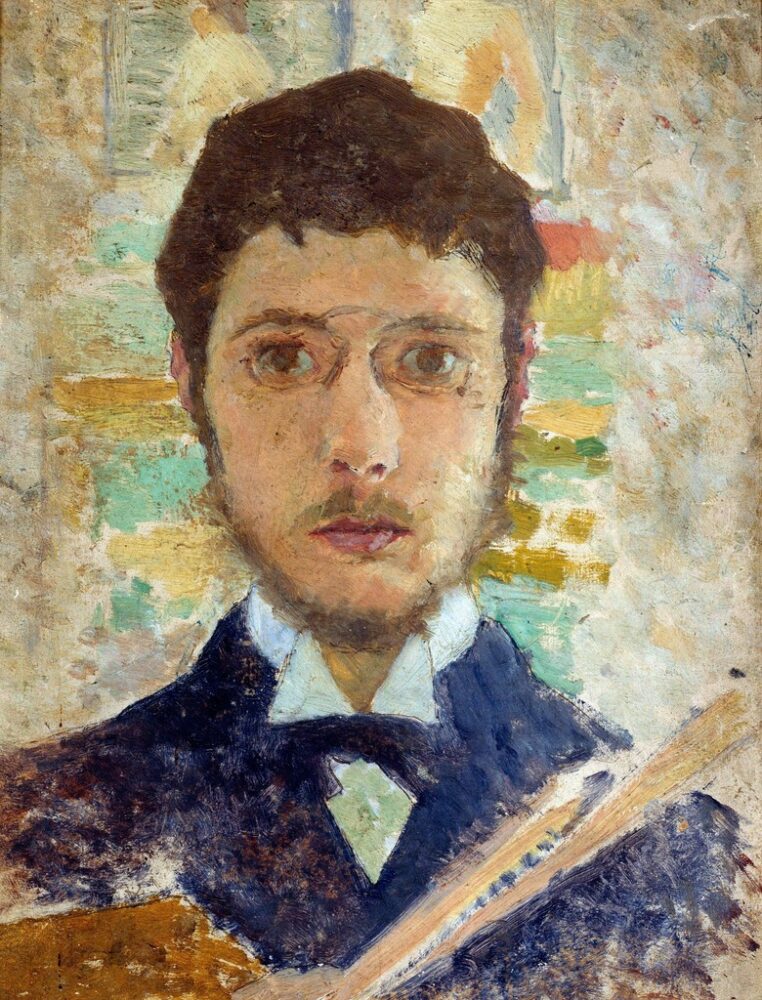
Pierre Bonnard was part of the Nabis, the generation of artists who followed the Impressionists.
The Nabis were known for their decorative style and slightly mysterious, dreamlike imagery.
While fellow member Maurice Denis preferred classical and mythological subjects,
Bonnard focused on intimate, everyday scenes — moments of quiet domestic life and sunlight filtering through interiors.
Because of this gentle and personal touch, he was often called an “Intimist.”
Bonnard and the Nabis also explored design — creating posters, illustrations, and even murals —
bridging the worlds of fine art and daily life.
A Dreamlike Moment in Nature
In “The landscape of Bathers in a Wood”, Bonnard revisits the classic theme of women bathing —
but rather than making them the main focus, he blends their forms naturally into the landscape.
The blue of the sky and the lush greens of the forest harmonize softly,
while the women’s figures seem to dissolve into light and color.
What could be an ordinary afternoon scene takes on a quiet, dreamlike mystery,
thanks to Bonnard’s delicate layers of color and rhythmic brushstrokes.
It feels less like a literal landscape and more like Bonnard’s ideal vision of nature —
a world filled with harmony, intimacy, and light.
Take Your Time to Feel It
There’s no single subject demanding attention here.
Instead, the painting invites you to imagine your own story — to simply feel the atmosphere.
Calm yet powerful, subtle yet emotional, this is Bonnard’s poetic world at its best.
If you visit the Morohashi Museum of Modern Art,
take a moment to stand quietly before this piece —
and let its gentle light and color wash over you.
Paul Cézanne
“Vacant Land through a Forest” (1867)
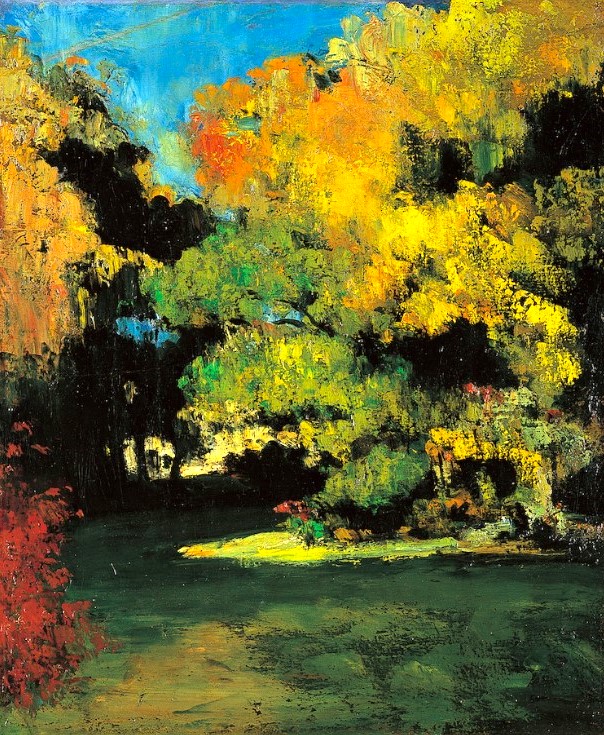
About This Work (Tap or Click to View)
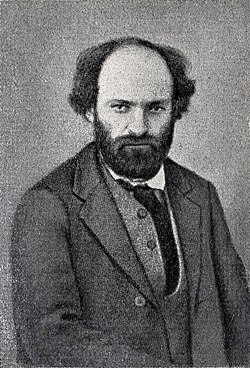
When you think of Paul Cézanne, you probably picture the familiar still lifes and landscapes found in every art textbook.
But before developing his signature style, the young Cézanne was deeply influenced by Romanticism and Realism — painting in dark, heavy tones filled with emotion.
“Vacant Land through a Forest” is a striking example from that early period.
At the time, Cézanne was experimenting with thick impasto techniques inspired by Gustave Courbet.
If you look closely, you can see uneven layers of paint, flat yet textured, with marks that suggest he used a palette knife to spread and scrape the paint.
Sometimes he covered the surface with thick strokes; other times he rubbed the paint thin to let the dark underlayer show through — a clear sign of his search for new ways to express form and texture.
A Glimpse of the Artist in Transition
“Vacant Land through a Forest” offers a rare look at Cézanne before he developed his signature style —
a period when he was still exploring and learning from the Romantic and Realist painters he admired.
Rather than breaking away from tradition, he was experimenting within it, studying how light, shadow, and texture could bring emotional depth to a scene.
If you visit the Morohashi Museum of Modern Art, take a moment to see this piece in person.
It captures both the passion of Romanticism and the early curiosity of an artist still searching for his own voice.
Jules Pascin
“The Girl has a hat” (1924)
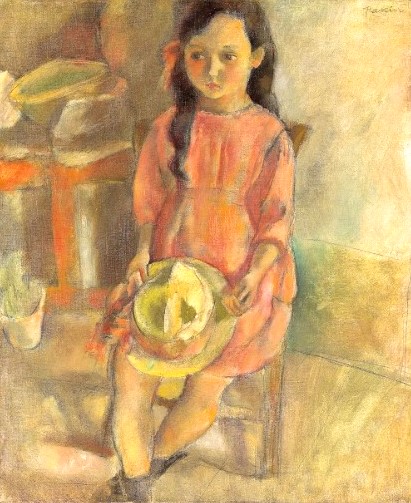
About This Work (Tap or Click to View)
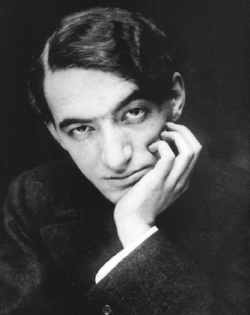
Jules Pascin was one of the key artists of the École de Paris, the circle of painters that included Léonard Foujita and other international artists working in early 20th-century Paris.
Known for his soft colors and flowing lines, Pascin often painted people with a dreamy, slightly melancholic air.
His “The Girl with a Hat” is a perfect example of his gentle, emotional style.
A young woman sits quietly, holding her hat on her lap and gazing downward with a faint, wistful look.
You can almost feel the calm afternoon light filling the room —
as if she’s getting ready to go out, or maybe waiting for someone to arrive.
Pascin was known for letting his models move freely in his studio.
He didn’t want to capture a perfect pose — he wanted to capture a moment.
To him, portrait painting was about sensing a person’s presence, not just painting their form.
Perhaps this girl shifted slightly in her chair, growing a little restless.
Pascin noticed that fleeting motion and emotion, and turned it into a timeless work of art.
Vincent van Gogh
“Peasant Woman, Half-Figure, Sitting” (1884–1885)
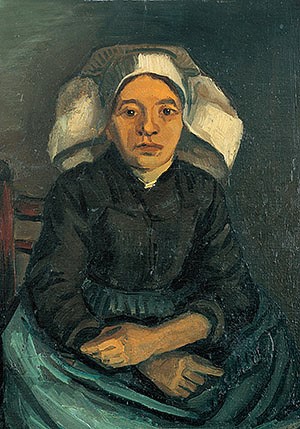
About This Work (Tap or Click to View)
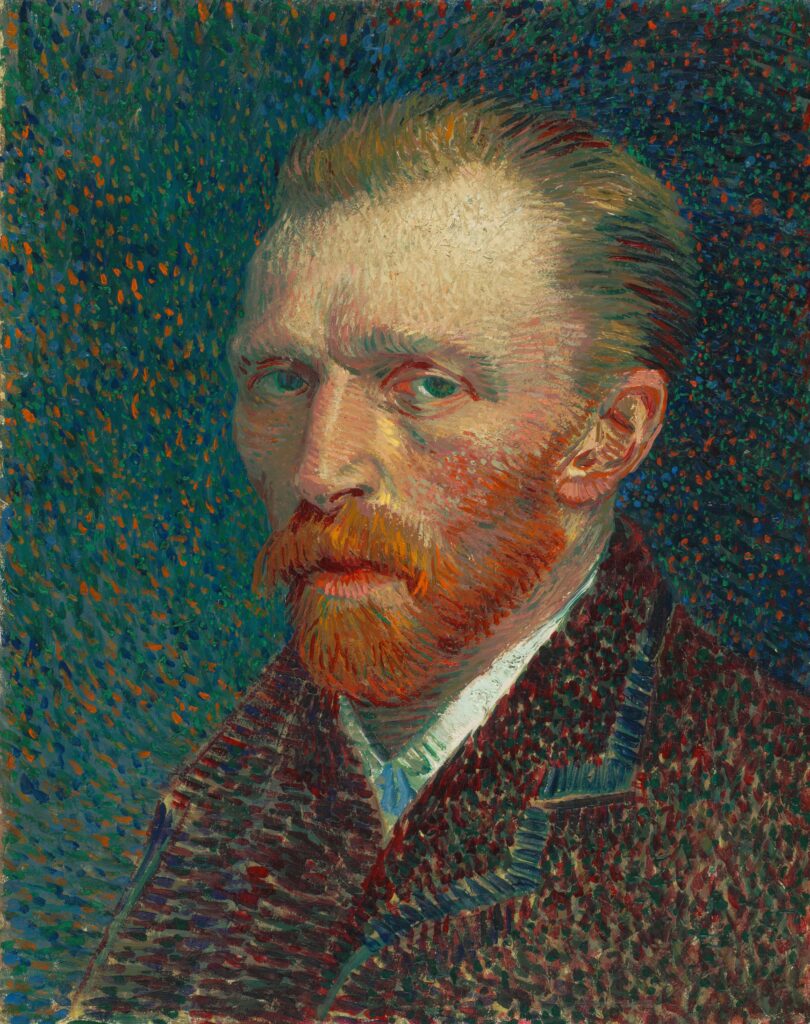
Van Gogh Before Color — The Painter of Shadows
When we think of Vincent van Gogh, we imagine the brilliant yellows of Sunflowers or the glowing blue skies of Café Terrace at Night.
But before becoming the “painter of color,” Van Gogh went through a period of deep browns and muted grays — a time when he focused on the quiet dignity of rural life.
After giving up his dream of becoming a preacher, Van Gogh believed his true calling was to paint the lives of peasants.
In 1883, he moved to Nuenen, a small village in the Netherlands, and began sketching and painting local farmers day after day.
The villagers often viewed him as an eccentric outsider, but Van Gogh never stopped working. He wandered the fields and cottages, sketchbook in hand, determined to capture the truth of their daily lives.
The Humanity in “Peasant Woman, Half-Figure, Sitting”
This work, Peasant Woman, Half-Figure, Sitting, comes from that period.
In the dim light of a simple interior, a woman sits quietly, her face and hands softly illuminated.
There are no bright colors here — only the warmth of human presence, expressed through solid forms and gentle light.
You can sense Van Gogh’s compassion and his desire to paint not appearances, but human truth.
Though Van Gogh is best known for his landscapes, he was deeply devoted to portraiture.
He saw great beauty in ordinary people and believed that art could honor their strength and dignity.
A Step Toward The Potato Eaters
This painting leads directly to his early masterpiece, The Potato Eaters (1885, Van Gogh Museum, Amsterdam).
That work captures everything Van Gogh learned in Nuenen — the sincerity, the hardship, and the quiet beauty of peasant life.
Knowing this part of his journey, it’s moving to realize that the painter who later filled his canvases with golden light began his path in the shadows.
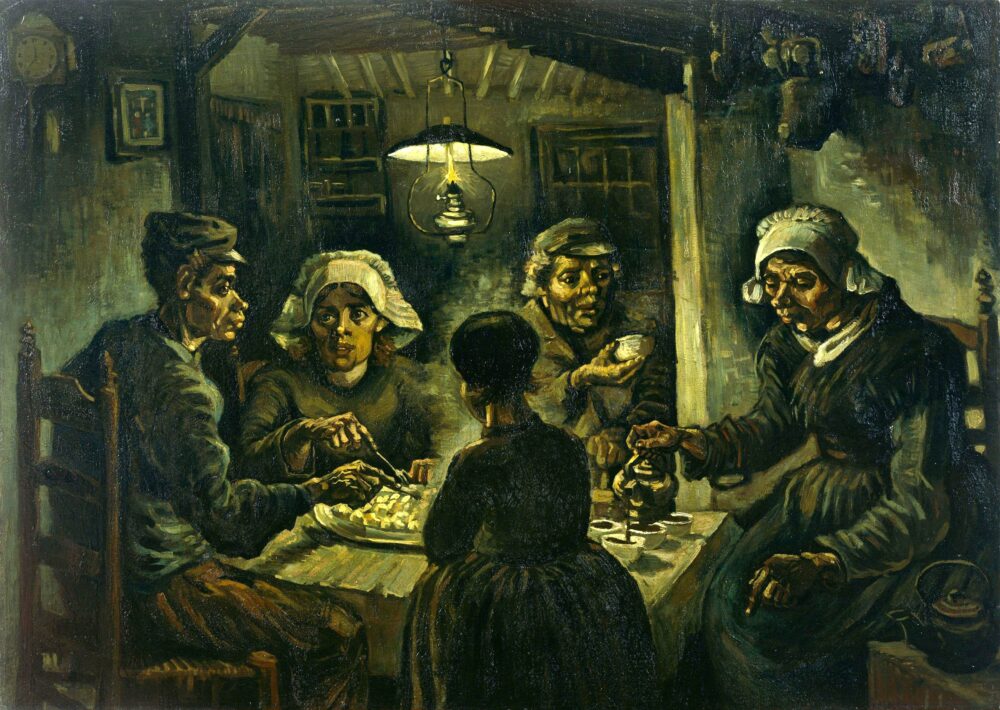
Conclusion

We’ve explored the Morohashi Museum of Modern Art, nestled deep within the beautiful forests and lakes of Bandai-Asahi National Park in Fukushima, Japan.
If you’re a fan of Dalí, Cézanne, or Van Gogh, this hidden gem is truly worth the trip.
Before you go, there’s one important thing to keep in mind — access.
The museum is located far from the nearest town, and public transportation is limited.
Buses run only a few times a day, so be sure to check the latest schedules in advance.
Also note that the museum is closed during the winter season, so it’s best to confirm the opening period on the official website.
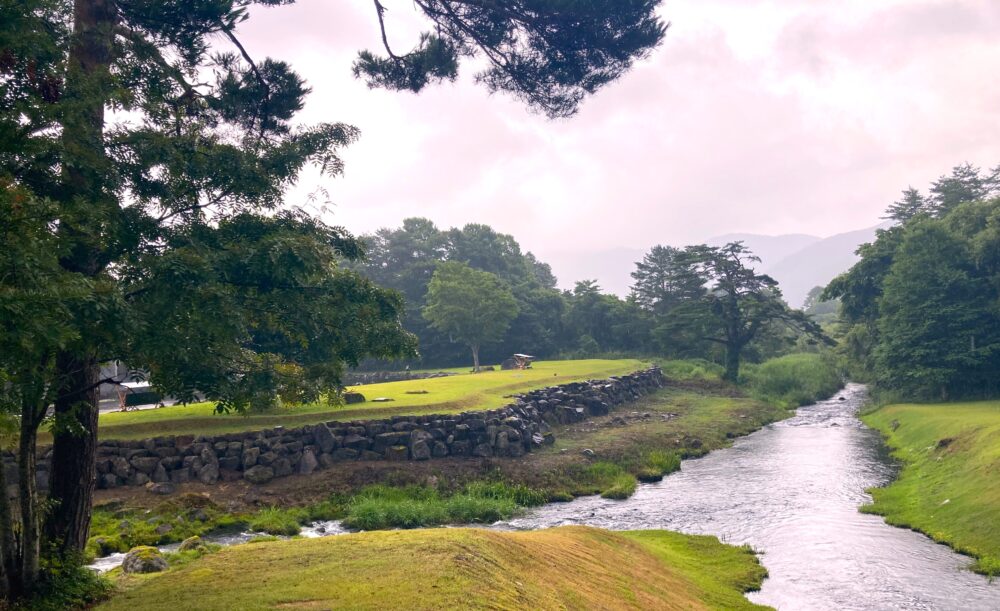
Once you arrive, however, you’ll feel as if you’ve stepped into another world.
Surrounded by nature, the museum blends seamlessly with the landscape — almost like a scene from a painting.
The garden paths, reflecting the harmony of Western art and Japanese nature, invite you to slow down and simply breathe.
Inside, you’ll find an impressive collection:
the museum holds the fourth-largest collection of Dalí works in the world, along with masterpieces by Sisley, Cézanne, Pascin, and Van Gogh.
It’s a truly rare opportunity to experience so many great artists in one serene, open-air setting.
Though it’s off the beaten path, the Morohashi Museum offers exactly what makes travel memorable —
silence, beauty, and discovery.
Let the natural splendor of Bandai Highlands and the timeless power of art fill your heart with peace.
Morohashi Museum of Modern Art – Visitor Information
Location: 1093-23 Hibarayama, Kitashiobara-mura, Yama-gun, Fukushima Prefecture, Japan


Comments